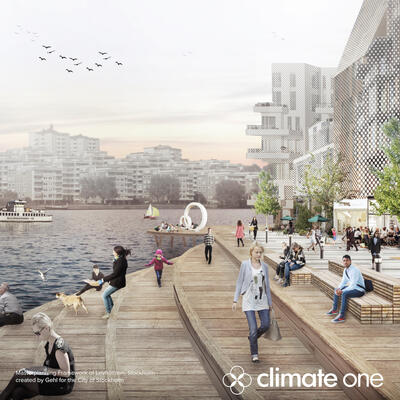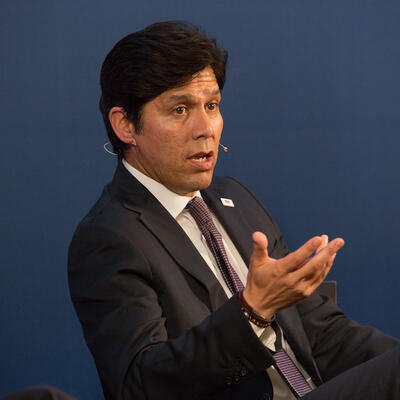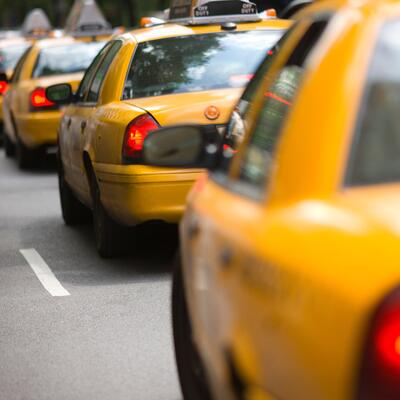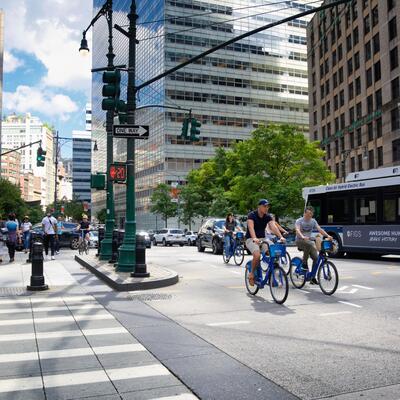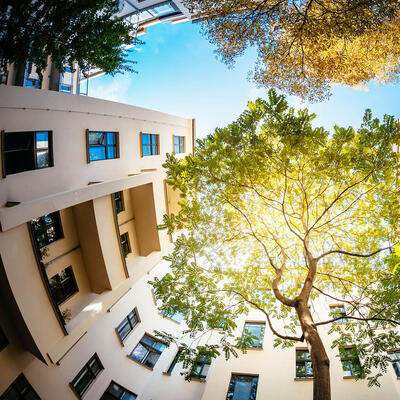
How Cities can Solve the Climate Challenge
Guests
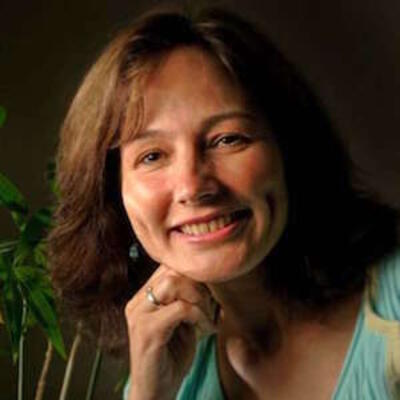
Diane Doucette
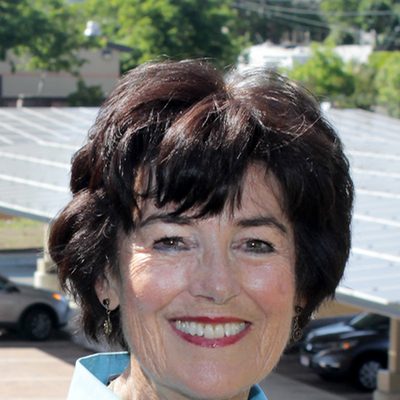
Elizabeth Patterson
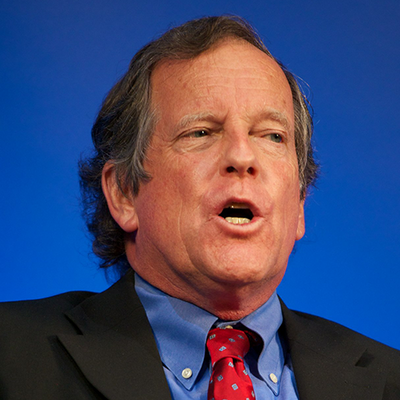
Carl Pope
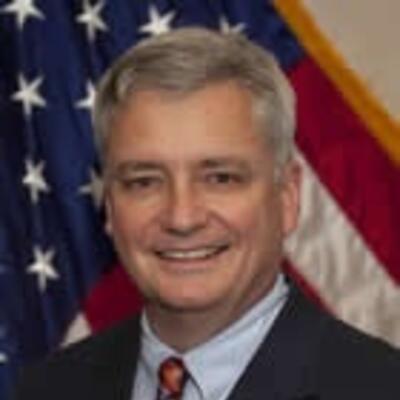
Rod G. Sinks
Summary
Cities around the country are reshaping their economies for a greener future. Mayors and chambers of commerce are promoting smart growth and moving toward cleaner energy, cleaner cars, and cleaner buildings, with or without support from Washington. On today’s show we discuss how local businesses and political leaders in red states and blue states are growing their economies, cutting carbon pollution, and preparing for the challenges of climate disruption in their own communities.
Diane Doucette, Co-Founder and Executive Director, Chambers for Innovation and Clean Energy
Elizabeth Patterson, Mayor, Benicia, CA
Carl Pope, Former Executive Director, Sierra Club
Rod G. Sinks, City Council Member, Cupertino, CA
This program was recorded live at The Commonwealth Club in San Francisco on May 4, 2017.
Full Transcript
Announcer: This is Climate One, changing the conversation about energy, economy and the environment.
In red states and blue states, cities around the country are reshaping their economies for a greener future.
Diane Doucette: 41 states have more clean energy jobs than fossil fuel jobs right now. Forty one states, that’s huge.
Announcer: Mayors and local leaders are promoting smart growth and preparing for the challenges of climate disruption in their own communities.
Elizabeth Patterson: Using a bully pulpit for a mayor is a really powerful tool to make a change and so I use that as often as I can.
Announcer: And each of us can all be part of that change..
Carl Pope: Virtually everybody in their everyday life has a powerful lever for improving the climate that will make them better off.
Announcer: How Cities Can Solve the Climate Challenge. Up next on Climate One.
Announcer: Could cities be the key to solving the climate challenge? Welcome to Climate One – changing the conversation about America’s energy, economy and environment. I’m Devon Strolovitch. Climate One conversations – with oil companies and environmentalists, Republicans and Democrats – are recorded before a live audience and hosted by Greg Dalton.
Burning fossil fuels disrupts all the systems around us – our food system, our water system, our ecosystems, and our economy. Climate change is everything, but solutions are everywhere around us now. On today’s show we discuss how local businesses and political leaders in red states and blue states are growing their economies and cutting carbon pollution – innovating and creating jobs that can’t be exported to China. Mayors and chambers of commerce are moving toward cleaner energy, cleaner cars, and cleaner buildings, with or without support from Washington.
Joining Greg are four civically-engaged guests. Diane Doucette is co-founder and executive director of Chambers for Innovation and Clean Energy. She works with business leaders in Arkansas, North Carolina, Ohio, Utah and other states. Elizabeth Patterson is Mayor of Benicia, California, a town of about 30,000 people in the San Francisco Bay Area that’s home to an oil refinery and other industry. Carl Pope is former executive director of the Sierra Club. He recently wrote a book with Michael Bloomberg entitled “Climate of Hope: How Cities, Businesses, and Citizens Can Save the Planet.” And Rod Sinks is a city council member in Cupertino, California, home of Apple’s corporate headquarters.
Here’s our conversation about how cities can solve the climate challenge.
Greg Dalton: Carl Pope, you and Mike Bloomberg got together to reduce coal in America. Donald Trump says he’s gonna bring back coal in America. Which billionaire is right?
Carl Pope: Well, I guess if you want a single example of why I’m pretty convinced that Mike Bloomberg is right, there’s a museum of American mining in eastern Kentucky, the museum about coal and it announced last month probably that it changed its electricity source from coal power to solar power because it wanted to save money. The reality is that coal is a wonderful 19th century fuel, it was a slightly dubious 20th century fuel, it is an absurd 21st century fuel.
[Applause]
Not because of the climate. It is full of water, full of toxic metals, full of things that make people sick. If you pile it up and don’t burn it quickly, it catches fire spontaneously. Getting it out of the ground is one of the most dangerous activities human beings have ever undertaken. It kills hundreds of thousands of people even today around the world. It’s expensive because it’s heavy and you have to ship it long distances. And you have alternatives now. We can use wind and solar, and they’re cheaper. So if they’re cheaper, they’re cleaner, they’re more local. Why not?
Greg Dalton: And also it’s fracking that’s really helped undercut coal in this country as much as some people would argue even more than Sierra Club and other groups. Is that fair?
Carl Pope: Well, not fracking per se but lower cost in natural gas is clearly being a very useful factor in the United States. But what I’m talking about is not just happening in the United States. China has canceled more coal power plants than the United States operates. India has announced that it is not gonna start any more coal plants. And those countries don’t have cheap natural gas. So the answer is yes in the United States you got three options. You got wind, you got solar, you got gas. In most of the world, you have two options. You got solar and you got wind. But everywhere in the world you have something better than coal.
Greg Dalton: Many cities around the United States are shifting up toward a broader focus on clean energy and its financial benefits. Let’s listen to Ryan Evans from Salt Lake City and Christy Gillenwater of Southwestern Indiana.
[Start Clip]
Ryan Evans: There’s definitely a rise in Utah of clean energy companies. It’s still a small amount of our total energy production in the state just because of the massive natural gas and coal, crude oil as well in Utah. However, that small percentage is growing every single year. We’ve seen a huge investment in the wind in particular. That’s been one of the best improving renewables in clean energies that we have. We’ve also seen a decent solar output. But at the same time we’ve got energy challenges in our state as well. And we will not get where we need to be simply from energy production.
Christy Gillenwater: Our region really is dominated by the coal industry. And so in the space of energy conservation, you know, we as a chamber have to play on the sensitivity of understanding how many jobs, how many people's lives are directly tied to the coal industry, but at the same time encouraging policy that fosters and catalyzes change we see opportunities to educate people on how renewable energy, clean energy can drive economic development. It’s important for the chamber to be engaged deeply in energy conservation. The millennial generation is very focused on issues such as energy efficiency, clean energy. So if you want to attract that kind of talent, it’s really critical that as a region, as a community, we look at clean energy, energy efficiency as a core value.
[End Clip]
Greg Dalton: That was Ryan Evans from the Salt Lake City Chamber of Commerce and Christy Gillenwater from the Chamber of Commerce in Southwest Indiana. Diane Doucette, there's a perception that clean energy is a blue state thing, a coastal thing, tell us what's happening in red states like those.
Diane Doucette: Right. Well, in cities all over the country clean energy is just really taking over fossil fuels in a lot of different ways. Every 41 states have more clean energy jobs and fossil fuel jobs right now. Forty one states, that’s huge. We work with local chambers all over the country and they're out there understanding even if they're in red states or blue states that clean energy creates jobs, it attracts investments to their state, it helps their local tax space which then funds some of their schools. So local chambers are key voices right now, more so than they've ever been before. And I just want folks to know that local chambers are very different than state chambers of commerce or the U.S. Chamber of Commerce. The U.S. Chamber of Commerce is on a national level talking about energy in a very different perspective than local chambers of commerce are. State chambers are also very close to the U.S. Chamber of Commerce. Local chambers often have different perspectives on energy and different policy positions. So we are working with them. They understand energy like mayors around the country. They're trying to attract jobs to their cities and they’re trying to get, as Christy said, millennials they’re trying to attract investment. I don’t think there is a red state – blue state divide so much on that.
Greg Dalton: Thank you. Elizabeth Patterson, you’re in a very conservative part of the San Francisco Bay Area. There’s an oil refinery, it’s the largest employer in your city. Do people there feel threatened by this transition? What's happening around the country, is it happening in Benicia as well?
Elizabeth Patterson: Well, we have kind of a geography that separates the refinery operation from where most of the residents are. So a lot of the refinery is out of sight, out of mind. And a lot of our residents don't make the connection that over 20% of the city's revenues come from the refinery. The refinery has a lot of influence in the school and some of our sports outfits and nonprofits. So there's that connection. But there really is a disconnect for a lot of people about the importance of the refinery for the city’s economy. Having said that, it's because of that disconnect that we have a lot of support for our climate action plan. We’re the first one in Solano County. We have achieved our 2020 goals. We have a lot of aggressive things that we are doing to be free from fossil fuel. And so I always say in our community that we want to pivot away from our dependence on fossil fuel into clean tech industries of which we have many, and to grow that population for the millennials. It's challenging but that's really what we’re trying to do rather than despair about what could happen to the refinery if it left town. We’re trying to say that we’re gonna transition to what is needed to reduce greenhouse gases.
Greg Dalton: Rod Sinks, in your city, Cupertino, home to the Apple headquarters, fancy new space shipbuilding, tell us about what was done there. You were on the city council when Steve Jobs first came in 2011 to present that building. So tell us how that symbolizes where at least some of Silicon Valley is going.
Rod Sinks: Absolutely. Well, there are a few large entities in the state of California that are able to prepare electricity directly. Apple is one of them. So they can put energy anywhere on the western grid and take it off anywhere. Apple has elected to essentially be carbon neutral this year with the opening of Apple Park or what was called Apple Campus too, and a facility in south of Cupertino. They will achieve that objective. And the other important thing for us to talk about is water. Remarkably, water is becoming scarcer as climate heats up. So 70% of the water consumption for the new campus actually will be non-potable water brought from our wastewater treatment plant which would've otherwise gone into the bay, but it's now being used at that new campus for irrigation and also for toilets and for cooling towers which really takes the pressure off of our potable water supply. And when we use more of that potable water supply over time we’re gonna have to recycle that more and more and that also cause energy. So these are important things. The campus was a typical single-story building campus with various buildings. The office part that was covered with asphalt parking lots, 80% – well 20% was green, now with this new campus it's been transformed into an office park that's 80% green. The parking is underneath. There’s a lot of public transportation benefit coming with this as well.
Greg Dalton: And Apple is running on 100% clean electricity. Carl Pope, you write about rooftop solar’s battle on America's rooftops. So to tell us about rooftops since solar power.
Carl Pope: Well, an interesting thing about the clean energy revolution is it raises the same question that any economic revolution raises, who is going to benefit and who is going to control. The issue right now is no longer is the future gonna be solar, it is, are you gonna own that solar or is a large utility gonna own that solar. And so what we’ve seen in the last several years is more and more Americans have chosen to basically make themselves energy independent by buying or leasing a solar panel and putting on their rooftop. Public utilities have a hard time with the idea that their customers are now their competitors. And in 2025, my bet is that almost no one will buy a house or an office that comes with the utility bill. You’ll have a little bit of solar panel on your rooftop, you will be drawing stored heat and cooling from underneath your building from the ground and everything else will be managed very efficiently and you won't need to pay your public utility for heating or cooling. That is a big challenge if you're running a public utility, if you are a guy whose job is, hey we get some shareholders out there and I got a whole lot of employees who are very talented people. And I think the big challenge that we are probably facing in this country and the thing we’re mostly likely to get wrong is not that we won't move from dirty to clean and not that we won't move from expensive to cheap. The biggest risk is that we will not figure out how to make sure that as we move from the 20th century economy to 21st century economy, we bring communities and families and workers along with us. That is something we are terrible at. And that is something that if we could fix one thing about Washington, that's the one thing I would like to fix because if we could get Washington to start paying attention to this enormous transition that’s coming at us. Let me give you an example. In 1922, America had peak horse. We had more horses in this country in 1920 than ever in our history. And we had 125,000 people making harnesses for those horses. One hundred and twenty-five, that is twice as many people that work in the coal industry today made harnesses in the United States in 1922. By 1928 – hold on. We didn't make America great by bringing back harness-making. Did we? We made America great by embracing the automobile. But as we embrace the automobile, we also created a booming economy which had jobs for everybody. And that's really what we need to worry about right now.
Announcer: You're listening to a Climate One conversation about cities and the climate challenge. You can subscribe to our podcast at our website: climate-one.org. Greg Dalton will be back with his guests in just a moment.
Announcer: We continue now with Climate One. Greg Dalton is talking about cities and the climate challenge with Diane Doucette, co-founder and executive director of Chambers for Innovation and Clean Energy. Elizabeth Patterson, Mayor of the town of Benicia in the San Francisco Bay Area. Carl Pope, former executive director of the Sierra Club and co-author with Michael Bloomberg of “Climate of Hope.” And Rod Sinks, city council member in Cupertino, California, home of Apple’s corporate headquarters.
Here’s your host, Greg Dalton.
Greg Dalton: Woodland, California is a town about 55,000 people and it operates what’s being touted as the first net zero energy rental development in the country for farmworkers and their families. Let’s listen.
[Start Clip]
Vanessa Guerra: My name is Vanessa Guerra. I’m the senior project manager for Mutual Housing California, a nonprofit affordable housing developer in the greater Sacramento area. We’re at Mutual Housing in Spring Lake. This is our first year-round farmworker housing or agricultural labor housing community. The development consists of 62 apartments, townhomes and flats. This is our first ZNE development, zero net energy development, where we’re able to produce enough energy on-site to offset all of the energy consumption. We’re standing out here, you can see all of the solar panels that we installed. This is about 209 kilowatts DC and it is able to offset about 330,000 kilowatt hours annually. That’s the Canary instrument. So that’s the energy monitor that shows them what their energy consumption is throughout the day and instantly too. So it’s kind of modeled like a soft light where the colors go from green, yellow, red and then there’s an extra color that’s fuchsia or purple and that’s actually telling you that you’ve gone beyond what the allocated amount of energy is. And from that, we've seen about 25% of the households are performing at the zero net energy goal. Essentially, the residents could get an average utility bill of around $5 to $6 if they’re able to be as conservative on their energy as possible. If we can do it here where typically it's not seen with affordable housing, we’re setting that example so that we can replicate it everywhere.
[End Clip]
Greg Dalton: That’s Vanessa Guerra, project manager for Mutual Housing in Woodland, California talking about a net zero energy development for farmworkers. Elizabeth Patterson, what do you think about the fact that some people can be left behind. That's a pretty unique example of farmworkers living in a net zero energy building but how about in your community. Are some people being left behind in this transition to clean energy?
Elizabeth Patterson: Well, I want to say that Carl addressed the issue of when you are changing from one power source or one energy source to another. I always like to say that the Stone Age didn't end because we ran out of stones. And it’s the same thing with the fossil fuel economy. So one of the things that drives me every day is, how do we pivot away from our dependence on fossil fuel and how do we gain that independence without wrecking our community. The city of Benicia has a long history. It was one of the first of the five cities incorporated in California and it was a capital. It's gone from prosperity to deep, deep depression before the depression started. So it's known a lot of hardship. And while I'm not a native of Benicia, I am a student of history and I have always been really interested in how you keep that community health and that committee well-being. So the Rust Belt is a pretty good example of how what Carl says we don't do very well in this country. And yet there are a lot of examples where we have not only in Europe in recovery from the war and going from industry to arts and culture, we have some examples here in this country. One of my goals is to see if we can provide that economic incentive that it is far better for us to encourage the arts and the culture. We have a very robust community in Benicia. It also has a historic aspect about where artists such as Judy Chicago and Bob Arneson and others, the list is very long. So we know that by having that kind of economic activity it attracts some of the interests of the millennials and their creative class. And we have a unique situation with manufacturing. We can use that manufacturing capacity to manufacture the beta products, to scale up. But we need help and what is lacking is not only any federal assistance in some of that transition which I think is critical, but the state doesn't really pay a lot of attention for a community that clearly is gonna have to change its economic base if we’re gonna get off of fossil fuels.
Greg Dalton: Diane Doucette, you work around the country in red states and is there an example where green energy developments have helped economic development, people who’ve been kind of left behind in this economy in the last decade or so?
Diane Doucette: Absolutely. Just today I was speaking to one of our local chambers in rural Ohio up in Van Wert Paulding County if anybody knows that area. It was a very poor area and they had a lot of wind development. They now have an investment of over $1 billion of investment in wind. And what the local tax base for that is so – I figure I think is they get a couple of million a year on that. That goes to the schools and to the technologies. Now there's a big effort in Ohio to roll back the wind energy, the renewable portfolio standards of the wind siting policies there. And she is out there on the front lines and working with chambers all over that state now to try to raise alarm bells that this is an economic development issue for local communities. And she’s starting actually to go around the country to tell that issue because they've seen it in all different parts of the country but in the rural areas, there is such an opportunity to invest in wind and solar and to have that go to the local schools and the local tax base.
Greg Dalton: Transportation is a big part of the climate equation. Rod Sinks, Silicon Valley is still built around the car, you're in a transportation desert. Are autonomous robotic vehicles going to save us? How do we get out of this gridlock that so many American cities are in?
Rod Sinks: Well, I think we need fast, ready, frequent transit that serves our major corridors. And yes, will autonomous vehicles play a role in this? Yeah, I think at all levels. We will have perhaps the traditional infrastructure of transit. But, you know, for me living in a city with very poor transit, I hop in my car because it's convenient. If there is an autonomous vehicle that was able to collect me with several other people on the way, an electrified vehicle that would take me to a shuttle stop a mile or two from my home and that would whisk me up to the train that would get me to the city and I never had to have that car leave my driveway, that’ll be a big improvement in my life, or maybe I'm going and my employer takes me the last mile to work. So these systems will be smart and they'll be electrified and it will really help us get around. Our busses at some point should also be.
Greg Dalton: Carl Pope, you worked with Mayor Bloomberg of New York. He’s done a lot with bike lanes, $2 billion to extend a subway a couple of blocks recently. How do you see solving the transportation piece of the climate equation?
Carl Pope: Oh, I think the important thing to understand is that urban infrastructure, even expensive urban infrastructure pays for itself. It generates enough wealth that it makes us richer and not poorer. But right now we don't let – most states don't let most cities collect the money from the people who make it. So you actually have a situation in which a business community that would love to pay for mass transit can’t pay for mass transit because the state rule is don't let the city actually collect the fees or the taxes from the property owners who make the money. Now, it's interesting, Salt Lake City, which we mostly think of is, well Utah is the reddest state in the country and Salt Lake City is the biggest city in the reddest state, Salt Lake City had the fastest growing mass transit program in the country because, in fact, the Utah legislature doesn't get in the way of Salt Lake City. On the other hand, the Florida legislature does nothing but get in the way of Florida cities that want to do things. So we have a real problem in this country that we don't give cities enough flexibility and freedom to work with their residents and their businesses to solve these problems even when the solutions are phenomenally lucrative.
Greg Dalton: We’re talking about American cities and climate change. That's Carl Pope, former executive director of the Sierra Club. We also have Rod Sinks a city council member in Cupertino, California; Elizabeth Patterson, Mayor of Benicia, California; and Diane Doucette who works with chambers of commerce around the country. I'm Greg Dalton. We’re gonna go to our lightning round, brief questions and brief answers for our guests today starting first with association. I’m gonna mention a noun, they’re gonna tell me what first comes to their mind. No filtering. Diane Doucette, Bartlett, Tennessee.
Diane Doucette: Energy efficiency.
Greg Dalton: Carl Pope, fracking for natural gas.
Carl Pope: Badly done.
Greg Dalton: Rod Sinks, robotic cars.
Rod Sinks: A great idea.
Greg Dalton: Elizabeth Patterson, the oil company Valero.
Elizabeth Patterson: It could transition to creating clean energy.
Greg Dalton: Carl Pope, Ivanka Trump.
Carl Pope: I hope she wins some.
Greg Dalton: Diane Doucette, Salt Lake City.
Diane Doucette: A wonderful chamber that really gets clean energy.
Greg Dalton: Elizabeth Patterson, Governor Arnold Schwarzenegger.
Elizabeth Patterson: An interesting man to work for and a leader on something that is very important to me.
Greg Dalton: Rod Sinks, getting paid to bike to work.
Rod Sinks: A great idea that's actually starting in our area.
Greg Dalton: Okay, this is true or false questions for guests today. Rod Sinks, true false. In 2015, Apple booked more than $2 million in revenues for each of its 110,000 employees.
Rod Sinks: Yes, true.
Greg Dalton: Followed by Facebook, Google and Microsoft. Diane Doucette, true or false. Some business leaders around the country are skeptical of you because you come from San Francisco.
Diane Doucette: True. With a Boston accent.
Greg Dalton: Carl Pope, true or false. It was a mistake for the Sierra Club to take $25 million from frackers in the natural gas industry to fight coal?
Carl Pope: False. You beat the enemy you gotta beat.
Greg Dalton: Elizabeth Patterson, true or false. Population growth is a major driver of climate disruption and resource depletion?
Elizabeth Patterson: True.
Greg Dalton: Last one Carl Pope, most environmentalists would rather talk about sexually transmitted disease or just about anything else than talk about population?
Carl Pope: False.
Greg Dalton: Alright let’s give a round to them for our lightning round.
[Applause]
Greg Dalton: Let’s talk about difficult conversations and how you're talking to people who are in different place on clean energy and Mayor Patterson, there is a what you call a “nice denier” on the council, retired utility executive who’s been kind of blocking some of the moves in your town in the home of an oil refinery. So talk to us about interacting with that nice climate denier.
Elizabeth Patterson: Well, obviously you try to find a common ground. So most councils make decisions on lots of things that they agree on it’s the sticky ones the development projects or something like Crude by Rail which was freight trains bringing in Bakken oil potentially tar sand oil for processing at the refinery. There are times when you simply agree that you can't find common ground on the idea that you should stop that transport of crude. And so you’re polite and you’re civil but on other things where you want to make an investment in alternative energies like putting solar panels up and on the city which is one of the ways that the city was able to achieve its 2020 goals is we put a lot of solar panels up then there's concurrence on that. So it’s finding the things that you can agree on and trying to just not get into it on the things that you clearly are not going to agree on. Don't personalize it and this particular case, he is a nice person. He’s a family person and earned a good income and made a major contribution in his career. So I respect that. And through that respect, I want to be respected for the things that we need to do. And I think mutual respect is very helpful as well. So there it’s a kind of getting to yes which the fundamentals are finding common ground and trying to find the areas that you can agree on. But there are some things you never will agree on and a few and so just get over it and go someplace else.
Greg Dalton: Diane Doucette, when you go to red states how do you, what language do you us in having these conversations? And I bet you don’t lead with climate.
Diane Doucette: Well, I have an interesting story of working with a House member, a very conservative House member in D.C. that was definitely a Tea Party member and a climate denier. And I brought a bunch of chambers back from the Midwest and a lot of businesses also, we went to his office. And the chamber that was helping me with that delegation said our main goal is not to get thrown out of his office. So the bar was really low. So we started talking to him about energy efficiency and all the chambers are piping up about how they created revolving loan funds for their member companies, how they all save money from that. The contractors were where telling about how it's such a conservative value, and that it really saves money. And this guy just started like, you know, scratching his head saying, “Are you guys serious? You really care about energy efficiency?” And we said, “Yeah, it really saves money.” And he said, “I thought it was an enviro thing?” We said, “No, it’s an economic thing actually.” He goes, “Well, you think I should like sponsor legislation in the House?” It was not the outcome that we had expected, you know, we wanted to not get thrown out of the office but it was amazing. He went back to the district, wrote an op-ed about the benefits of energy efficiency and talked about local chambers. So it’s the message you speak to them in their language. The economics of clean energy are there. A lot of people haven’t used them but using them to people who care about the economics really makes a lot of sense.
Greg Dalton: Rod Sinks, have you had difficult conversations either in your family or elsewhere with people who are in different place on energy and climate?
Rod Sinks: Well I’ll tell you a story about our local community. We measured all the sources of carbon in Cupertino and created a climate action plan, you mentioned that earlier cities do. We found that the biggest thing that would have the biggest impact most quickly was to go and compete with the monopoly electricity provider and that serves most all of Northern California. And we wanted to get other cities in Silicon Valley in on this. We went down to Gilroy and frankly there was a lot of skepticism down there. We don't know about something that's going to be done by government, how could you compete and a lot of skeptics that just wanted less expensive. We said with competition, not only can we address our climate footprint. So today, we’re serving in Cupertino electricity that's a 100% carbon free, but we can do it for a little bit less than the incumbent utility. What’s the language? Competition. We’re gonna go compete and we’re gonna have a race to the top to provide electricity that's less expensive and yes, it happens to be carbon free. We’re taking our carbon free footprint from 2015, 27% of our greenhouse gas emissions were from electricity generation. Next year when where Silicon Valley clean energy is fully in operation, 2% of our greenhouse gas emissions. That's a huge difference in a short time.
Greg Dalton: Carl Pope, we have a national administration that’s kind of going back toward fossil fuels. People concerned about the Paris climate agreement. If the U.S. Federal Government kind of stays in Paris, but doesn't fund it and kind of puts on the brakes, can cities and states move the U.S. forward and keep Paris alive?
Carl Pope: Well, the United States as a country is going to meet the commitments it made in Paris in 2015 regardless of what President Trump’s administration may do. We've already in two years gotten 60% of the way there.
Greg Dalton: Wow, I’ve not heard that before.
Carl Pope: And we didn't get there because there were a lot of – President Obama did set up a lot of regulations which would've moved us there and would've been good for us and Donald Trump is gonna undo some of those regulations. And that gap is gonna be filled in by states, by cities and by companies. I mean, let me give you, since Donald Trump was elected president. So everybody now knows we got this guy in the way that says what he says, whatever he believes. Since that time, we've had the fastest rate of announced shutdowns of coal-fired power capacity in the nation's history. We've had the largest renewable energy contract signed in the world's history. We have had the largest beer manufacturer in the country Anheuser-Busch which is not an Apple, it's not a Silicon Valley company it's pretty heartland, announce that it's going to 100% clean electricity. We’ve had 30 American cities announced the biggest purchase order for electric vehicles in the world's history, 114,000 electric vehicles. That’s all happen in four months since Donald Trump was elected.
[Applause]
We can do it folks. We’re gonna do it and the sad thing about the conversation that the administration is having about leaving Paris is this was a treaty designed by the United States to be good for the United States, it's the best trade deal of the United States ever signed. So Americans are gonna figure out ways to get the benefits of cleaning up their environment whether the president wants them to or not.
Announcer: We’re hearing about how cities can solve the climate challenge. This is Climate One. Check out our podcast at our website: climate one dot org. Greg Dalton will continue his conversation in just a moment.
Announcer: You’re listening to Climate One. Greg Dalton is talking about cities and climate change with Diane Doucette, co-founder and executive director of Chambers for Innovation and Clean Energy. Elizabeth Patterson, Mayor of Benicia, California. Carl Pope, co-author of “Climate of Hope: How Cities, Businesses, and Citizens Can Save the Planet.” And Rod Sinks, city council member in Cupertino, California.
Here’s Greg.
Greg Dalton: I’d like to ask all of you about your own particular carbon. What you've done in your life, Elizabeth Patterson to reduce your carbon footprint? (0:46:06)
Elizabeth Patterson: So we belong to a community choice of energy which is Marine Clean Energy and that's where you have boards that are made up of local jurisdictions. And it's not an investor owned utility and I'm a hundred percent green because I have too many trees and I can’t put solar panels in my house. And I walk most of the time around the city, it’s a small city so I can get around. And then I try to grow my own food as much as I can and I don't eat a lot of beef like I haven’t for the last 20 years. Water is very key, I just did install laundry to landscape greywater system and because I live in an old half it's hard to retrofit where I could capture bathwater. As a mayor, I work to promote doing those kinds of individual residential projects by providing technical assistance and providing subsidies and getting the word out. Using a bully pulpit for a mayor is a really powerful tool to make a change and so I use that as often as I can.
Greg Dalton: Carl Pope, there’s a debate among people behavioral scientist whether this kind of individual action is a good thing because it gets people involved, or that it's a bad thing because it makes you think that, oh I have a Tesla or a Prius and I'm solving the problem when really you're not. Where do you come down on that individual action?
Carl Pope: I guess I have a hard time with the idea that doing the right thing is a bad thing, if you put the question that way. But the key thing is you can't do enough right things alone. You have to do right things with other people if you want to really do enough right things to make a big difference. So it's not about not doing the right thing. But one of the things we said in the book, the reason we wrote the book was when we looked at the landscape we realized that virtually everybody in their everyday life has a powerful lever for improving the climate that will make them better off. One of the examples I’d use is if you’re talking to somebody who’s younger they will ask you, what can I do? Well, that young person is gonna be applying for jobs. The most important thing they can do is to make the climate policy of their employer one of the factors in the choice they make and let their employer know that it’s one of the choices. One of the reasons American companies are going so great is frankly they want to be able to hire the best workers. And they’ve concluded the best workers don’t particularly wanna be poisoning the planet. So it's about doing things together, but it doesn't mean you have to go work for the Sierra Club. It doesn't mean you can't live in a small town. There are opportunities wherever you are and we tried to lay them out in the book.
Greg Dalton: Great. Diane Doucette, in your life what green things are you doing?
Diane Doucette: Well, I did get a hybrid and I know that's not enough. I dedicate my life to working to help people reduce their greenhouse gas emissions. I did an energy audit, I insulated my windows, I painted my roof white.
Greg Dalton: Rod Sinks, your personal carbon footprint?
Rod Sinks: My personal carbon footprint. I drive a plug-in EV and like Elizabeth, I have a house that is shaded in great part by a big oak tree. And so I'm also a customer of my Community Choice Energy agency that I helped found. So hundred percent carbon free electricity is a wonderful thing for businesses and residents in my community to participate in.
Greg Dalton: And that's growing across the country. People didn't used to have a choice where they get their electrons. Now people are having choice where they get their energy to power their homes. We’re gonna invite you to join us with one, one-part comment or question. Encourage you to keep it brief, if you need some help with that I'm here for you. Welcome to Climate One.
Male Participant: Yes. Dan Rinke, question for Carl. You mentioned just briefly in your book, the metropolitan area community and yet most of what we’re talking about today is the formal city. Do you see any role for what I call re-energized metropolitan area political community that can speak to the nation and the Bay Area would be an ideal place to do that?
Greg Dalton: Carl Pope.
Carl Pope: Well, I believe in metropolitan gathering together. And one of the reasons frankly Salt Lake City works well is that the city is pretty much a large part of the metropolitan area. There are some very, very dedicated and brilliant people in the Bay Area business community who have broken their pick trying to make this area into a metropolitan community. And if they haven't solved the problem I don't think I have the answers but it would be a wonderful thing.
Greg Dalton: Welcome to Climate One. Let’s have our next question.
Female Participant: Hi, my question is for Mr. Pope. You spoke about the restriction states can put on cities and working with their communities on transit issues. My question for you is what step one in changing this paradigm?
Carl Pope: Probably getting involved in local politics to make sure that your mayor and your city council people know they have a community behind them when they go off to the state legislature and say, “Get out of the way.”
Greg Dalton: Let’s go to our next question.
Male Participant: Yeah, someone who works in municipal government, how do you suggest folks work within their sphere of influence to positively impact these issues? To any of you.
Greg Dalton: Elizabeth Patterson.
Elizabeth Patterson: So I’m a big advocate for participatory government. There are boards and commissions that you can apply for. I think it's a hidden value in most cities, there's a tremendous amount of talent and knowledge. And then sometimes you have big issue and you can get people to take a leadership role on helping other people come. And there's nothing better than a bunch of warm bodies in the council chamber to help a vote. So there are all kinds of opportunities, go see your local elected official follow him around, I mean move to Benicia and I’ll –
[Laughs]
Greg Dalton: Rod Sinks.
Rod Sinks: Move to Cupertino. But listen, I think President Obama said it best. He said you get involved get engaged at the local level, and if you don't like the answers you’re getting, grab a clipboard and run for office. We need a lot of bright people to do that.
Greg Dalton: We’re talking about America's cities and green energy at Climate One. Let’s go to our next question.
Female Participant: Hi, I was wondering if any of you guys have undertaken efforts to make the issue of climate more racially and economically inclusive in your local community?
Carl Pope: Well, we are in fact a society with a lot of ethnic segregation and it affects most organizations and it affects environmental organizations and it’s a terrible thing and people are working on it, but there’s a way to go. But if you think about the issues and you look at the public opinion polls. It turns out, the real environmental champions in this country most of them are white. They’re mostly Asian, Latino, African-American. If you look at who actually uses America's public lands the most, so you said, okay, who spends the most hours per year in a park, it’s Hispanics. So, these issues are very inclusive the organizations and the movement need to catch up with the issues.
Greg Dalton: Something we wrestle with and think a lot about here at Climate One as well. Let’s go to our next question, welcome.
Male Participant: Hi, my question is also for Rod. I wanted to speak about the role the increase in urban density can play in fostering public transit and walkable communities. So can you speak to that a little bit?
Greg Dalton: Suburban America doesn't like to have taller buildings. Rod Sinks, is that –
Rod Sinks: Well sometimes. I mean that can be the case. I do think you can achieve effective transit without having to get overly dense. We have a lot of concerns about having to be Manhattan and honestly, you know, take a look at Portland, Oregon up the coast across three counties they have a very effective transit system. It happens to have half the density of the Silicon Valley that I live in. Half the density with three times the ridership per capita and a good payback. So I think the message is we need effective transit even in these places that are dominated by single-story buildings as the greater Portland Metro areas.
Elizabeth Patterson: I think to what Rod is talking about is we need to work with what we have and encourage infill. But one of the answers to transportation is emerging now and that is the on-demand transportation, it sort of fits that first mile, last mile conundrum that we have. And we’re applying that in Solano County with a pilot project where we are going to be contracting with some businesses and with Lyft because they were willing to enter into a contract with the transportation agency. So I don't consider the land use, the pattern of land use and the low density as impediment. I see it as something that we have to be clever and smart about and put together some of the emerging things in transportation.
Greg Dalton: Next question. Welcome to Climate One.
Male Participant: For Diane, for cities that have a local government and businesses that may not have the strongest leadership. What do you think of the framework like STAR communities that has multiple categories that can help move the ball forward?
Diane Doucette: Well, what we've seen is some organizations have put people in chambers of commerce to lead the issue so some land use groups have put a person in a chamber of commerce for a couple of years to educate them on better land use policies and then help them argue for better policies at city council. I would advise nonprofit groups all over the country to work with your local chamber to do that. Local chambers are such a key voice on this issue, but they don't have any sufficient bandwidth they get inundated with calls from every interest group out there. And if you want to have energy at the top of their list which we do then we have to help them prioritize that and help them be more active. So how do you put somebody in a chamber to do more energy efficiency? How do you put somebody in the chamber to do solar installation projects? And they’re welcoming nonprofit participation. Not all nonprofits that are there then you have to be able to speak the business language and the economics but I think it's a really good model. And we’ve seen that in Minnesota a lot.
Greg Dalton: Let’s go to our next question. Welcome.
Male Participant: My question is for Mr. Pope. Earlier you spoke upon by 2025 people won’t buy a home with a utility bill. How would you suppose that would happen because typically when you buy solar panels it stays within your possession or the possession of the company doesn't really stay with the home after the homeowner moves?
Greg Dalton: Carl Pope.
Carl Pope: Well, I think that's gonna change. I think the solar panels will be built in into the building when it’s built. And I think the heat pump will be built into the building when it’s built and the water recovery system will be part of the system and it'll be called the utility free building. And it'll be, yeah, you’ll be able to borrow more money for your mortgage because the bank will understand which banks have been very slow to understand that if you don't have a utility bill, you can pay for the mortgage and you're less likely to default. So I think it's gonna happen because the builders now, you know, right now they’re saying maybe it cost 7%, 8% more to get rid of the utility bill that's already paying for itself in three or four years. But in five years I think that margin will be much smaller. (01:04:16)
Greg Dalton: Next question. Welcome.
Male Participant: Hi, I was hoping you could speak a little bit about the importance of incorporating sustainability curriculum into public education and how we can better educate our students to really believe that they can be agents of positive change.
Elizabeth Patterson: I’d like to address that. We had a legal settlement agreement with Valero that provided about $14 million for a variety of programs in the city of Benicia and part of that money went toward supporting an educational program at the school district which created in high school a track for environmental studies. And so that's one way and it’s a culture of sustainability it’s a culture looking to the future and what you can do, what field you can work in, what things you need to know. So it's a really great program and many communities are doing that.
Greg Dalton: Next question. Welcome.
Female Participant: I'm so glad this young gentleman here asked that because I’m a highschool teacher and a National Geographic Grosvenor teacher fellow. And in my students, I see our future problem solvers and policy makers and all of them are going to be future boarding citizens. So it’s so important to bring this event and advocacy through them but right now while California is a leader that is looked upon as one of the leaders for climate change and they sure is related to it. We do not have a youth climate summit on the entire West Coast. What support can I, as a teacher expect from our city or from any of their organization if I'd like to bring such a summit to the West Coast?
Greg Dalton: Rod Sinks.
Rod Sinks: I certainly have something to say about this. The Bay Area Air Quality Management District has a YES conference every February. We invite high school students from all over the Bay Area to participate, you know, I think that that is a very substantial conference and it's grown year-over-year it sells out a month in advance. It's that popular and we have thousands that participate. But I think, you know, environmental education such as you're able to do in the classroom ought to be part of core curriculum in schools across the country. We need to understand what it means to be human beings in the 21st century and what's going on with our planet. So this isn't I mean, yes, some people will choose specific careers to become professionals, but we need all of our kids to be educated and understand what the big challenge of our day is.
Greg Dalton: We have to wrap it up. I wanna end by asking each of you the title of Carl Pope’s book is, you know, Climate of Hope, we’ll get to him last. Mayor Patterson, what gives you hope. You look at the headlines the science is very dark, you know, doom and gloom. What gives you hope?
Elizabeth Patterson: All the people that have reacted to the election and then are engaging in meeting and homes and campaigning and writing letters and making phone calls. I think maybe we have a chance.
Greg Dalton: So Donald Trump's election was good for the climate?
Elizabeth Patterson: I think so.
Greg Dalton: Diane Doucette.
Diane Doucette: Everybody that’s getting activated to do climate work right now. Whether it be business leaders, students, everybody that it just seems like there's a momentum right now that Trump can't stop.
Greg Dalton: Rod Sinks.
Rod Sinks: Some of us are getting tired of winning but, I mean, you know, honestly the next generation sees opportunities in these challenges. They see economic growth. They see jobs, they see a future. And that's I think the beacon we look to.
Greg Dalton: Carl Pope, last word. You've talked about the optimism of markets going in the right direction. What drives your hope?
Carl Pope: Well, what's fascinating to me is that when you leave Washington, people stop looking in the rearview mirror. When you go to a country like India, everybody's looking forward. And the fact to that what I like to call mortar on the potomac is not typical of any place else in the world is what gives me hope.
Announcer: Greg Dalton has been talking with Diane Doucette, co-founder and executive director of Chambers for Innovation and Clean Energy. Elizabeth Patterson, Mayor of the city of Benicia in the San Francisco Bay Area. Carl Pope, former executive director of the Sierra Club and co-author with Michael Bloomberg of “Climate of Hope” And Rod Sinks, city council member in Cupertino, California.
To hear all our Climate One conversations, subscribe to our podcast at our website: climate-one.org, where you’ll also find photos, video clips and more.
Please join us next time for another conversation about America’s energy, economy, and environment.
[Applause]
Climate One is the sustainability initiative at The Commonwealth Club of California. Greg Dalton is our Executive Producer and Host. Jane Ann Chien is the producer. Kelli Pennington Directs our Audience Engagement. Carlos Manuel is our Booker and Associate Producer. The audio engineer is William Blum. I’m Devon Strolovitch, the editor. The Commonwealth Club CEO is Dr. Gloria Duffy.
Climate One is presented in association with KQED Public Radio.

